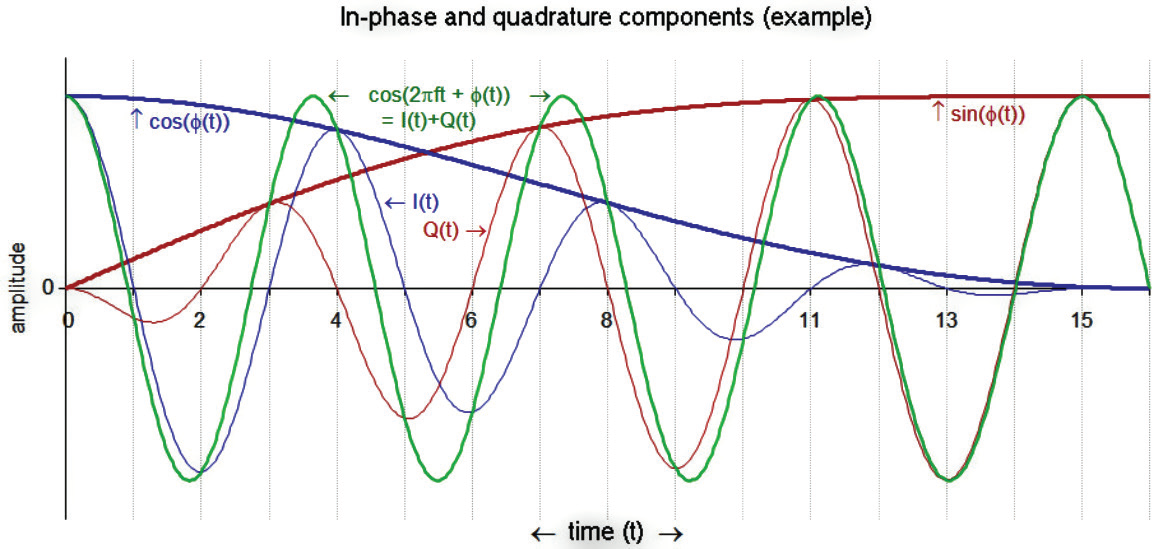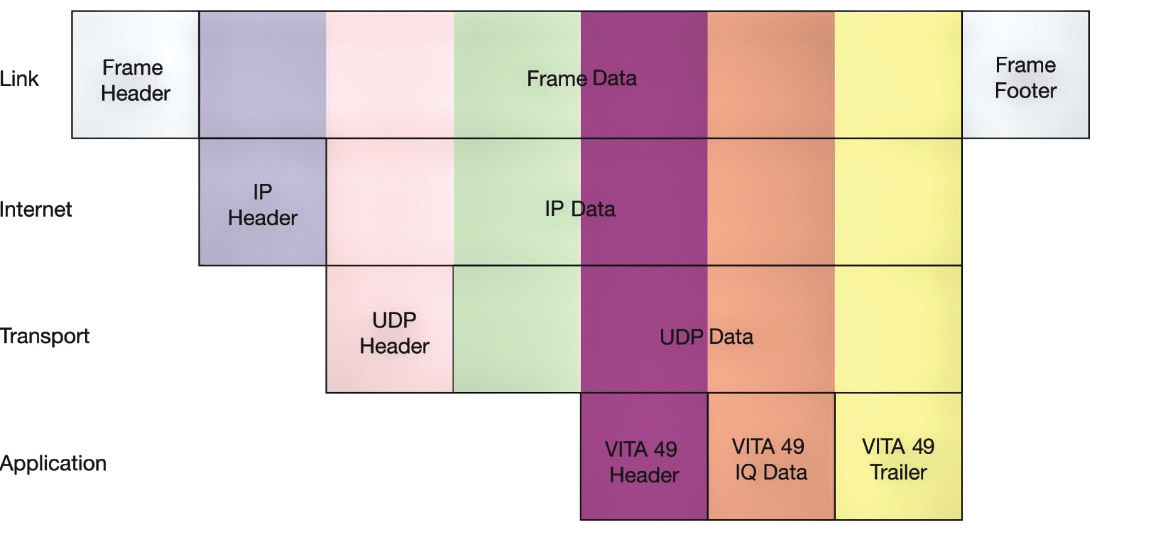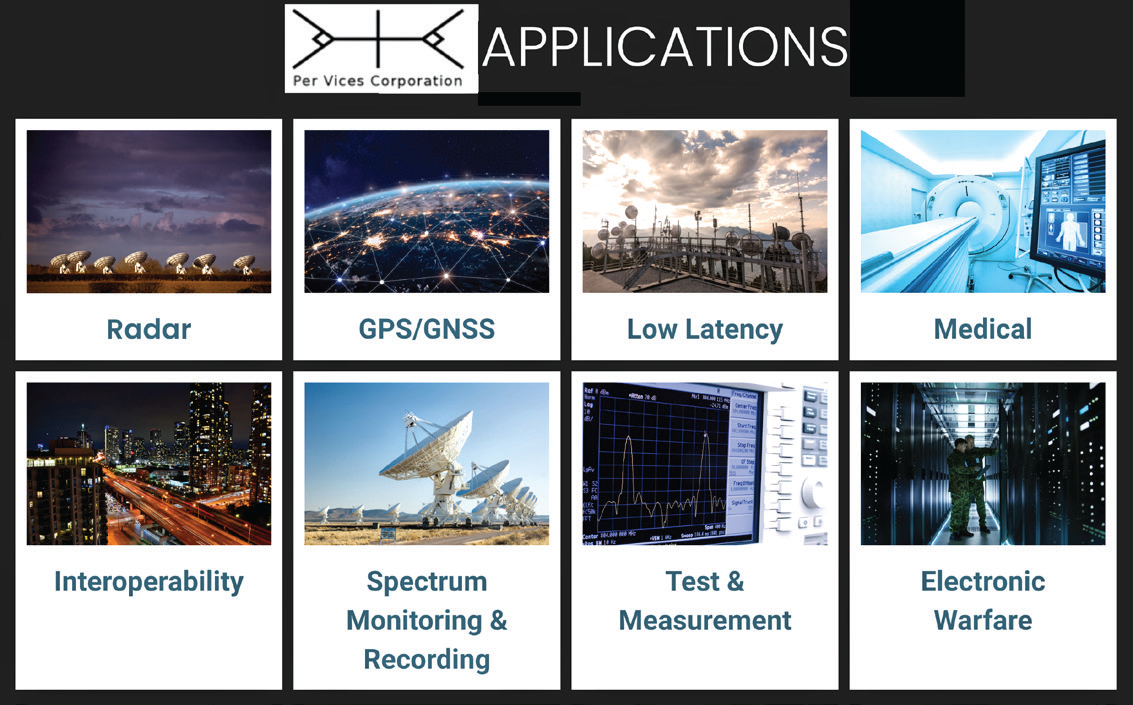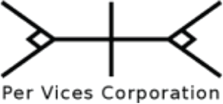Software defined radios (SDRs) are radio communication systems that carry out certain processes in RF communication typically performed by hardware, such as modulation, demodulation, and signal processing, using software instead. An SDR comprises a flexible radio front end (RFE) and a digital back end.
 Figure 1: I and Q components of a signal are shown. cos(2πft + Φ(t)) = cos(2πft)cos (Φ(t)) + cos (2πft + π/2) sin (Φ(t)). The phase modulation (φ(t) is a non-linearly increasing function from 0 to π/2 over the interval 0 < t < 16. The two amplitude-modulated components are known as the in-phase component (I, thin blue, decreasing) and the quadrature component (Q, thin red, increasing) (image source: https://commons.wikimedia.org/wiki/File:In-phase_and_quadrature_ components_of_angle_modulation.gif)
Figure 1: I and Q components of a signal are shown. cos(2πft + Φ(t)) = cos(2πft)cos (Φ(t)) + cos (2πft + π/2) sin (Φ(t)). The phase modulation (φ(t) is a non-linearly increasing function from 0 to π/2 over the interval 0 < t < 16. The two amplitude-modulated components are known as the in-phase component (I, thin blue, decreasing) and the quadrature component (Q, thin red, increasing) (image source: https://commons.wikimedia.org/wiki/File:In-phase_and_quadrature_ components_of_angle_modulation.gif)
The RFE, which is responsible for all receive (Rx) and transmit (Tx) functions, typically contains amplifiers, filters, mixers, and analog-digital/digital-analog converters (ADC/DAC). The digital backend comprises an FPGA with DSP capabilities and is responsible for digital modulation/demodulation, upconverting/downconverting, signal processing, and data packetization/transfer.
After a signal is received, prepared, and converted by the RFE, the next step before signal processing is demodulation. Similarly, digital signals to be transmitted have to be modulated before conversion, preparation, and transmission by the radio front end. There are various schemes used in telecommunications for digital modulation/demodulation, with the most commonly used in SDRs being Quadrature modulation/demodulation.
These schemes involve quadrature signals, known as IQ signals, and are carried out by IQ modulators and demodulators. IQ signals are a pair of signals that differ in phase by 90° (2π). In this state, they are said to be in quadrature. The reference signal is the “in-phase” signal referred to as “I” while the differing signal is the Q signal, i.e. the quadrature signal, as seen in Figure 1.
In the receive chain, an IQ demodulator converts the received signal into its I and Q components while the reverse is carried out in the transmit chain by an IQ modulator. When the received signal has been demodulated, i.e. converted into its IQ pair, it is often referred to as raw RF data. Usually, this data is further processed in the FPGA + DSP to provide processed RF data. This processed data is then available as spectrograms, power vs. time plots, magnitude phase plots, FFTs, etc. However, in certain cases, raw RF IQ data that hasn’t undergone any form of processing is required.
Raw data is often needed when the precise data of interest is not known, for example, when the modulated wave carrier is unknown. Another common example is when interfering signals are suspected within a band of interest but the signals’ exact sources/frequencies and the actual source of the interference are unknown. In such cases, the raw RF data has to be preserved for further analysis.
SDRs make it possible to carry out data streaming operations seamlessly. High-performance SDRs can capture and preserve large amounts of data. This operation involves a series of procedures. The first step is capturing the RF signals. This step involves receiving, downconverting, and digitizing the signals by conversion to IQ data.
IQ conversion, carried out with high fidelity, is followed by recording. In the recording stage, the raw IQ data is streamed to storage solutions where it is stored for playback and analysis. Playback and analysis are carried out on dedicated systems and involve upconversion, waveform regeneration, etc. for further analysis. In certain SDR platforms that require minimal storage, it’s possible to have onboard storage capabilities. As well, in certain systems, the data is streamed for real-time analysis on a host system, eliminating the need for storage.

Figure 2: The stack for Per Vices’s Crimson TNG and Cyan is shown. The data stream is divided into frames. All data and headers are within each Ethernet frame as shown. The internet layer features an IP packet that comprises a header and a data section. The data section bears the payload protocol lodged within the link layer. Located within the transport layer is the UDP while the application layer is where the VITA 49 layers are implemented.
Whether for real-time analysis or storage for future analysis, SDRs stream data between RF systems and related equipment, often by using VITA 49 radio interface. Per Vices’s highly advanced SDRs, Crimson TNG and Cyan, support standard signal data packets as stipulated by VITA 49, a packet-based protocol for conveying digitized signal data. Per Vices employs a data encapsulation format that implements stack layers — VITA 49 (application) within UDP (transport) within IP (internet) within Ethernet (link layer). Within the link layer, an Ethernet stack is available for transferring data between SDR and the host computer. Figure 2 shows the data stack.
There are various reasons why sometimes processed data and other times raw RF data are used. This can be due to the application itself, or limiting factors in terms of storage solution, and/or computational power. Both types of data offer unique advantages in different scenarios. One scenario requiring raw IQ data is environment simulation, in which everything within the spectrum is needed to ensure that algorithms or other processing developments are taking place as they should. On the other hand, processed data is utilized in numerous SDR applications to ensure data can be transferred correctly, including broadcast, GNSS, scientific data collection, and satellite communication. In these situations, the exact information-carrying signal is known and digital processing is required to uncover the signal and obtain the data through noise/interference, downconverting, demodulation, and processing.
Furthermore, processed data requires much less storage space than its raw data counterpart, as digital signal processing significantly reduces the amount of data that needs storing. In addition, processing data on an SDR’s FPGA is much faster than sending it to a host system. Processing data also allows you to use IQ modulators to perform different forms of modulation, such as 16QAM.
Important Parameters For Data Straming
There are certain requirements that the SDR, storage solution, and host system used for raw RF IQ data capturing and recording must meet in order to ensure an efficient and seamless process. These requirements are defined under parameters such as RF bandwidth, data throughput, storage space, and memory.

Figure 3: Per Vices’s Cyan is an SDR with a storage solution.
Data capturing for raw data applications involves monitoring various signals. It is therefore imperative for SDRs used in these applications to have substantial bandwidth. Regarding storage, the bandwidth being captured and the bit rate/ resolution of the ADC determine how much data will be streamed to and stored on the storage device.
 Figure 4. Crimson TNG offers a 4 receive and 4 transmit radio chain architecture that supports independent control on each of the radio chain or the ability to share a common LO for better phase coherency and stability performance. Each radio chain has an impressive 325 MHz of bandwidth with 16 bit converters and a tuning range from near DC to 6 GHz. The digital interface for controlling the system is a standard 1G Ethernet port and the data transfer is done over dual 10GBASE-R interfaces, providing users with up to 20 Gbps of data transfer.
Figure 4. Crimson TNG offers a 4 receive and 4 transmit radio chain architecture that supports independent control on each of the radio chain or the ability to share a common LO for better phase coherency and stability performance. Each radio chain has an impressive 325 MHz of bandwidth with 16 bit converters and a tuning range from near DC to 6 GHz. The digital interface for controlling the system is a standard 1G Ethernet port and the data transfer is done over dual 10GBASE-R interfaces, providing users with up to 20 Gbps of data transfer.
For example, at 500MHz of IQ data being captured at 16 bits per sample, 500 MSPS*16 bits*2(IQ) = 16Gbps of data will need to be stored. This means that capturing only 5 minutes of data would result in 600GB of data needing to be stored per radio chain.
Considering the large amounts of data being transferred, high throughput is a crucial requirement for both the host system and SDR. Per Vices utilizes 10/40/100GBASE-R network interface cards capable of 10, 40, and 100 gigabits per second data transfer, ensuring that no packets are dropped or lost. An ultrafast host system with high-speed PCI express serial buses capable of up to 32 Gbps is also required.
As well, RAM is a vital consideration in the host system as it determines how much data can be written due to buffering. Moreover, we recommend using RAID (Redundant Array of Inexpensive Disks) configuration as, using this mass storage technique, data can be transferred from SDR to hard disk at rates beyond the rate of acquisition: thus making maximum waveform size independent of on-board memory and more dependent on hard disk size.
Applications Requiring Raw RF Data
There are a number of applications that require raw RF data before processing. One of these applications is spectrum monitoring and recording. In this application wideband spectra are monitored and the obtained RF data recorded for future analysis to identify unlicensed or illegal interference. This application allows raw RF data to be utilized and involves monitoring a particular part of the spectrum over a period and recording the data for further analysis.
In this application, the carrier wave signals are known (and likely able to be changed), and so all signals within the bandwidth of the spectrum which could pose a problem, have to be monitored. This is also the case in radar applications which involve continuous monitoring with the aim of detection of jamming signals, etc.

Raw RF data is also used in signal intelligence. Signal intelligence involves gathering intelligence from communication systems through the interception of signals. This application is now a vital aspect of public safety, security initiatives, and situational awareness. As wireless protocols become increasingly complex, there is a corresponding increase in spectrum congestion and electronic warfare (EW) sophistication.
Signal intelligence involves the collection of immense amounts of data for analysis and data extraction. Since the exact data-carrying signal is unknown, a lot of raw RF data has to be captured. The data gathered is usually bulky and complex, often requiring the application of AI and machine learning to extract the desired information.

Another common application that requires raw RF data is radio frequency fingerprint search. Fingerprints can be a mix of modulation and spreading codes of the signals, the I/Q imbalances and phase noises due to the local oscillator, the power amplifier non-linearity of the transmitters, and the different transients as a result of front-end filtering. An example of fingerprint research is in GNSS fingerprinting.
If the fingerprint of an authentic transmitter is known, then machine learning algorithms for signal classification can be employed to differentiate between real signals from GNSS space segments and fake signals from GNSS simulators. Often this is important in defence applications, such as drones requiring GNSS/ GPS for navigation.
Per Vices offers two of the world’s most advanced SDR platforms, Cyan, seen in Figure 3, and Crimson TNG, shown in Figure 4.
With bandwidths of up to 3GHz per radio chain, transfer speeds of up to 400Gbps, and on-board data storage for our SDRs of up to 100TB, our SDRs are the most powerful for all raw RF IQ data applications.
www.pervices.com



